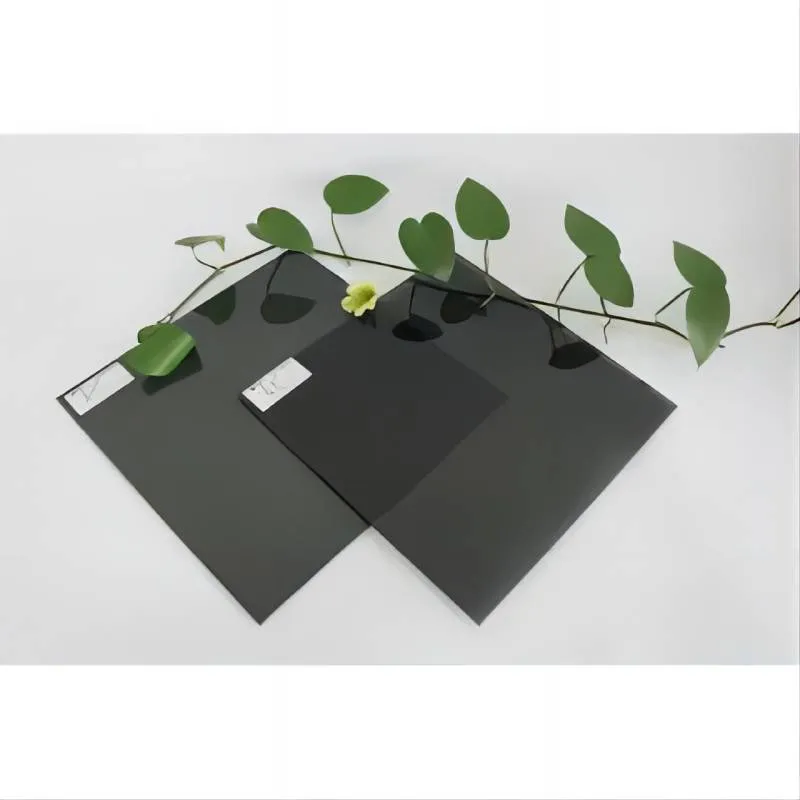The Manufacturing Process of Tempered Glass
Tempered glass, also known as toughened glass, is a type of safety glass that is processed by controlled thermal or chemical treatments to increase its strength compared to normal glass. It is widely used in various applications, including buildings, vehicles, and furniture, due to its superior strength and safety features. Understanding the manufacturing process of tempered glass is essential to appreciate its unique properties and benefits.
1. Raw Material Extraction
The first step in the manufacturing process of tempered glass involves the selection and preparation of raw materials. The primary ingredient in glass production is silica sand, which is mixed with other materials, including soda ash and limestone. These components are crucial for achieving the desired consistency and properties of the glass. The mixture is then melted in a furnace at high temperatures, typically around 1,700 degrees Celsius (3,092 degrees Fahrenheit), until it forms a molten glass.
2. Forming the Glass
Once the raw materials are melted, the next step is to shape the glass into sheets or panes. This is generally achieved through various methods, including the float glass process, where molten glass is floated on molten tin to create uniform thickness and clarity. The glass is then cooled gradually to solidify. Afterward, it is cut into the required dimensions, ready for the tempering process.
3. Annealing
Before the glass can be tempered, it undergoes an annealing process. Annealing is a controlled cooling process that helps to relieve internal stresses within the glass that can occur during the cooling down phase. This is performed in an annealing lehr, where the temperature is gradually reduced, ensuring uniform cooling and reducing the risk of fractures during the subsequent tempering process.
4. The Tempering Process
The real transformation into tempered glass occurs in the tempering phase. This involves heating the glass to a temperature of about 620 to 680 degrees Celsius (1,148 to 1,256 degrees Fahrenheit). Once it reaches the desired heat, the glass is then rapidly cooled using a process known as quenching. This is accomplished by blowing cold air onto the surface of the glass while the interior remains heated, causing the outer layer to cool and solidify much faster than the inner part.
manufacturing process of tempered glass
Through this rapid cooling, compressive stresses are introduced on the surface of the glass while tensile stresses are created in its interior. These stresses significantly increase the strength of the glass, making it much more resistant to impact and thermal shock. The result is a product that is approximately five to six times stronger than standard glass of the same thickness.
5. Cutting and Finishing
After the tempering process, the glass is now much stronger and can be further processed. However, it is important to note that tempered glass cannot be cut or altered after tempering, as any modifications would lead to breakage. Therefore, any necessary cutting or finishing must be completed prior to the tempering phase. To achieve the desired aesthetic and functional qualities, finishing processes such as polishing, edging, and washing are employed.
6. Quality Control
Quality control is a crucial step in ensuring that the tempered glass meets safety standards and specifications. This includes testing for thickness, clarity, and structural integrity. Additionally, tests such as impact resistance and thermal performance are conducted to benchmark the glass against industry standards. Any glass that does not meet these criteria is discarded or recycled into new glass products.
7. Applications of Tempered Glass
Tempered glass has a wide range of applications. It is commonly used in automobiles, shower doors, glass doors and tables, and facades of buildings. Due to its safety features, when broken, tempered glass shatters into tiny, blunt pieces, reducing the risk of injury. This characteristic, combined with its strength, makes tempered glass a preferred choice for many architects and builders.
Conclusion
The manufacturing process of tempered glass involves several intricate steps, each contributing to the creation of this remarkable material. From careful selection of raw materials to the precise thermal treatment that enhances its strength, tempered glass exemplifies the innovations in material science that ensure safety and durability in everyday applications. Understanding this process helps to appreciate the critical role tempered glass plays in modern construction and design.
 Afrikaans
Afrikaans  Albanian
Albanian  Amharic
Amharic  Arabic
Arabic  Armenian
Armenian  Azerbaijani
Azerbaijani  Basque
Basque  Belarusian
Belarusian  Bengali
Bengali  Bosnian
Bosnian  Bulgarian
Bulgarian  Catalan
Catalan  Cebuano
Cebuano  Corsican
Corsican  Croatian
Croatian  Czech
Czech  Danish
Danish  Dutch
Dutch  English
English  Esperanto
Esperanto  Estonian
Estonian  Finnish
Finnish  French
French  Frisian
Frisian  Galician
Galician  Georgian
Georgian  German
German  Greek
Greek  Gujarati
Gujarati  Haitian Creole
Haitian Creole  hausa
hausa  hawaiian
hawaiian  Hebrew
Hebrew  Hindi
Hindi  Miao
Miao  Hungarian
Hungarian  Icelandic
Icelandic  igbo
igbo  Indonesian
Indonesian  irish
irish  Italian
Italian  Japanese
Japanese  Javanese
Javanese  Kannada
Kannada  kazakh
kazakh  Khmer
Khmer  Rwandese
Rwandese  Korean
Korean  Kurdish
Kurdish  Kyrgyz
Kyrgyz  Lao
Lao  Latin
Latin  Latvian
Latvian  Lithuanian
Lithuanian  Luxembourgish
Luxembourgish  Macedonian
Macedonian  Malgashi
Malgashi  Malay
Malay  Malayalam
Malayalam  Maltese
Maltese  Maori
Maori  Marathi
Marathi  Mongolian
Mongolian  Myanmar
Myanmar  Nepali
Nepali  Norwegian
Norwegian  Norwegian
Norwegian  Occitan
Occitan  Pashto
Pashto  Persian
Persian  Polish
Polish  Portuguese
Portuguese  Punjabi
Punjabi  Romanian
Romanian  Russian
Russian  Samoan
Samoan  Scottish Gaelic
Scottish Gaelic  Serbian
Serbian  Sesotho
Sesotho  Shona
Shona  Sindhi
Sindhi  Sinhala
Sinhala  Slovak
Slovak  Slovenian
Slovenian  Somali
Somali  Spanish
Spanish  Sundanese
Sundanese  Swahili
Swahili  Swedish
Swedish  Tagalog
Tagalog  Tajik
Tajik  Tamil
Tamil  Tatar
Tatar  Telugu
Telugu  Thai
Thai  Turkish
Turkish  Turkmen
Turkmen  Ukrainian
Ukrainian  Urdu
Urdu  Uighur
Uighur  Uzbek
Uzbek  Vietnamese
Vietnamese  Welsh
Welsh  Bantu
Bantu  Yiddish
Yiddish  Yoruba
Yoruba  Zulu
Zulu 

